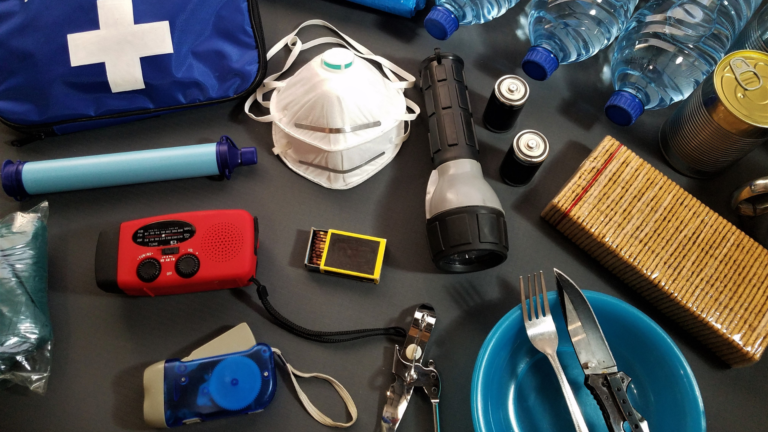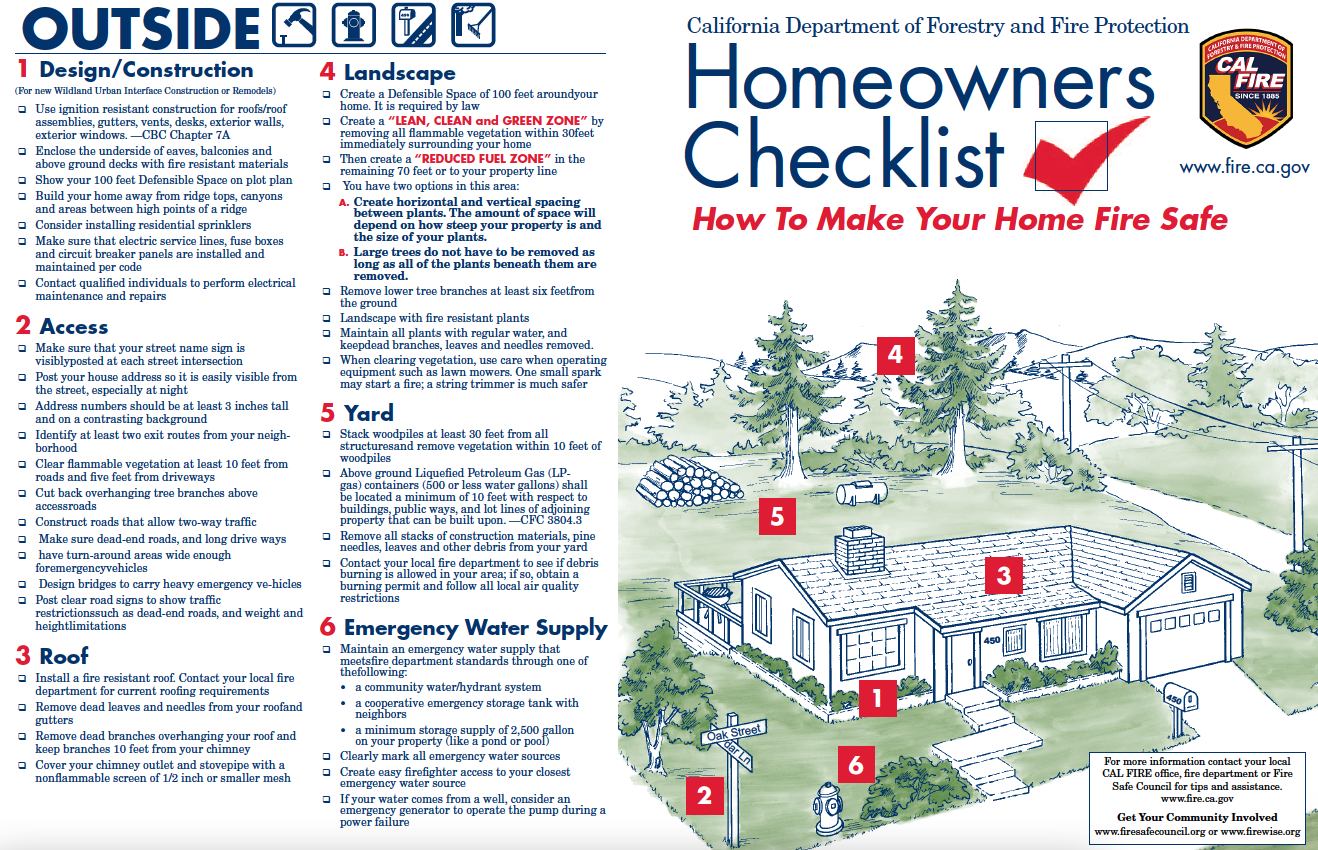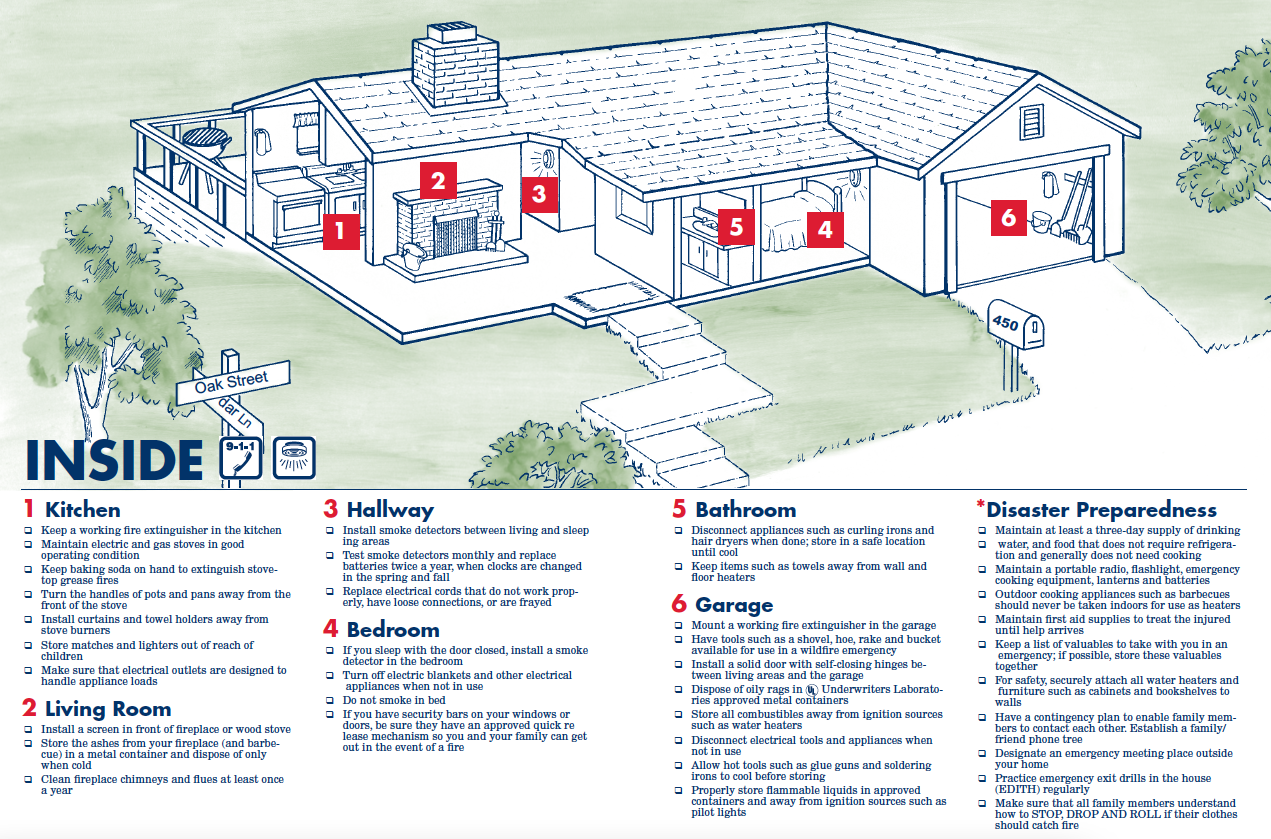

Last up in this series is Preparing Yourself for Fire Season. Although this post is specifically related to being prepared during times of heightened fire activity, it’s always a good idea to be prepared in case of any sort of emergency. Hopefully this will give you an idea of some things you can do to ensure you keep yourself and your family safe.
-
- Part 1: Preparing your Land
- Part 2: Preparing Your Home
- Part 3: Preparing Yourself
Part 3: Preparing Yourself
When it comes to fire safety, an ounce of prevention is worth a pound of cure. Even if you only invest minimal effort into fire preparedness, it will be better than doing nothing at all. The most important thing is to make sure that all members of your household know the dangers of fire and what to do if there is one. Although it seems like common sense, you’d be surprised by how many fires are started accidentally or how many people don’t know what to do if one breaks out.
EDUCATE
-
- Teach children not to play with fire! Lighters, matches, candles, gas stove, etc. should all be addressed.
- Teach children what a smoke detector does, what it sounds like, and what to do when they hear it go off.
- Make sure everyone knows how to dial 9-1-1 and has access to a phone. This is especially important if you don’t have a landline. If you have a password protected cell phone, make sure children know they can still call 9-1-1 when the screen is locked.
BE PROACTIVE
-
- Make an emergency escape plan. Write it out, draw pictures, and discuss it as a family. Commit it to memory! Here is a great resource and visual aid from Cal Fire to help you get started.
- Encourage neighbors to make a plan and share it with each other. The Fire Safe Council of Nevada County has a great template for this called Find Your Five & Share Your Plan.
- Make sure all windows in your home open easily and screens can be popped off. Confirm each member of your house, young and old, can open every window without help.
- Show children how to pop out screens and where all potential exits of the house are located.
- Make sure all doors in your home are easily unlocked and able to open properly. Be mindful of doors with locks at the top that little ones or elderly may not be able to reach.
- If you have a 2-story home, be sure you have an escape ladder or way to get out of the house if trapped on the 2nd floor.
- Have a “go bag” ready for everyone. Check supplies quarterly to be sure you have fresh batteries, appropriate size clothes, cash, etc. (see list below for details)
- NEVER leave your car’s gas tank near empty. In a true emergency, you may not have time to stop for gas so make it a habit of filling up before you head home for the day.
IMPLEMENT
-
- PRACTICE YOUR PLAN! In times of chaos, your brain tends to go a little haywire. Practicing your emergency escape plan, popping out window screens, getting everyone out of the house with go bags, pets, etc. will help to create muscle memory in case of an actual event.
- PG&E offers a simple questionnaire that generates a custom emergency plan made specifically for you. Once completed, you could then use this to practice implementing your plan so you feel prepared in case of an actual emergency.
- Twice a year, press the smoke alarm test button and yell “FIRE” to alert all members that they need to vacate the house. After everyone has reached the meeting point outside the house, review what happened and how you can do better for a real event.
- Meet up with friends/family/neighbors at your designated location spot. Talk about what might happen if your destination is compromised. Do you have a back up plan?
“GO BAG” IDEAS
Everyone’s emergency kit will look different, but there are some basic tools and supplies that should be included in all go bags in case of an emergency. Below are links to various sources and their recommend items. Take a look at the lists below and put together a bag that works for you. Don’t forget about pets and livestock!
Emergency Information Resources
It’s important to know where you can get reliable information and updates during times of disaster. Below are Placer and Nevada County resources that will come in handy during these situations. Consider going to these sites on your cell phone and bookmarking them now for easy access when needed. And because Public Safety Power Shutoffs are now a common event during fire season, it would be wise to visit PG&E’s website and sign up for the PSPS notifications, if you haven’t done so already.
Placer County Resources
-
-
- Placer County Emergency Information
- Register for Placer alerts
-
Nevada County Resources
-
-
- Nevada County Incident Dashboard
- Register for CodeRED alerts
-
In the case of a wildfire, house fire, or other natural disaster or emergency situation, your mind will likely be going a mile a minute and incapable of thinking through the details of everything you need to grab and do. That’s why it’s so important to prepare in advance to give yourself the extra time to make sure everyone gets out safely. An hour of preparation today could save your life or the lives of your family members during a disaster. Make it a goal to sit down and come up with a plan for your household this weekend. I promise you, you won’t regret it!
For the “Too Long, Didn’t Read” version of all three posts in this series, you can check out the Homeowner’s Checklist graphic below by Cal Fire that incorporates all items from each of the three segments!


